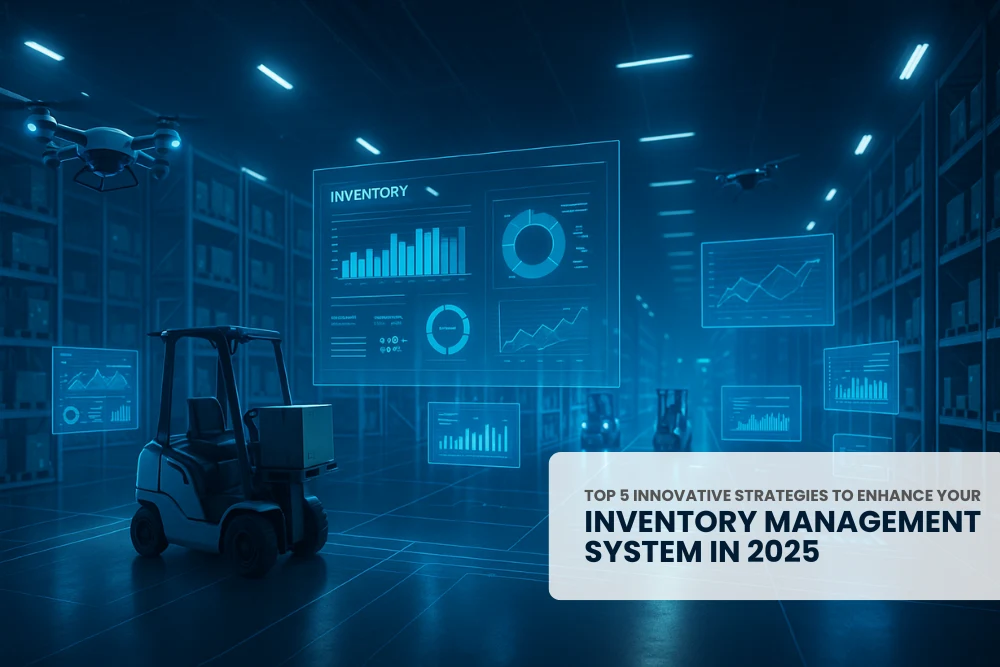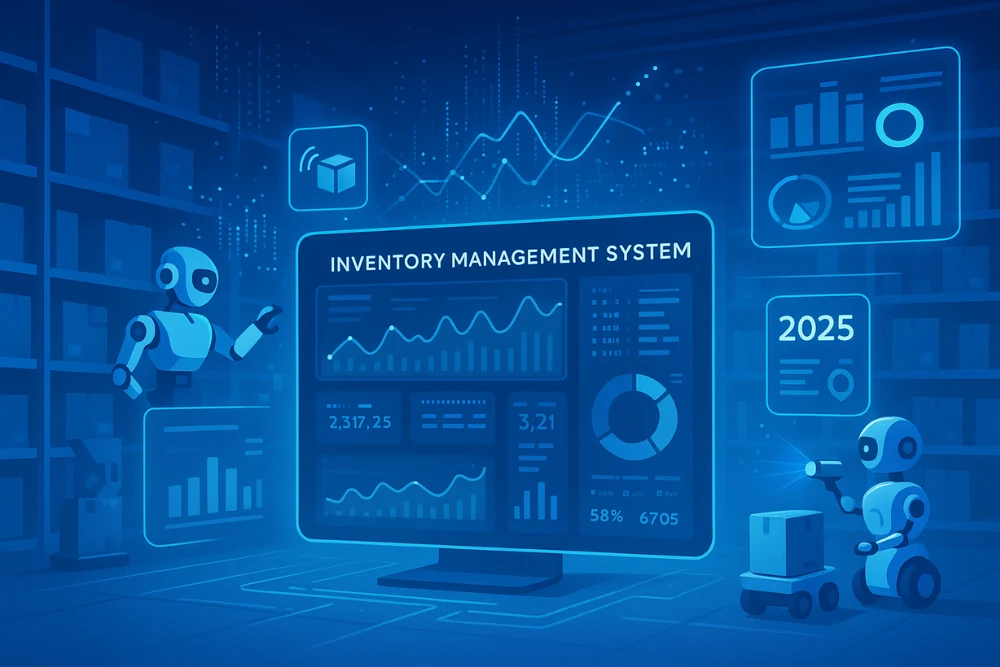Top 5 Innovative Strategies to Enhance Your Inventory Management System in 2025
Oct 02, 2025

In the fast-paced world of 2025, where every second counts and consumer expectations soar higher than ever, effective inventory management has transformed from a back-end logistical concern to a front-line business strategy. Gone are the days of spreadsheets and manual tracking; today’s successful businesses harness cutting-edge technology and innovative practices to keep their shelves stocked and operations seamless.
If you’re ready to revolutionize your inventory management system and stay ahead of the competition, you're in the right place! Join us as we unveil the top five game-changing strategies that will not only streamline your processes but also empower you to respond swiftly to market demands—setting you up for unprecedented success this year! Get ready to take notes because these insights could redefine how you do business in 2025!
Real-Time Inventory Tracking with Cloud ERP
Cloud ERP software allows businesses to access their inventory data from any location with internet connectivity, making it convenient for real-time tracking. It provides a central repository for all product information, allowing organizations to have a comprehensive view of their inventory levels at any given time.
One of the biggest advantages of using a cloud ERP for real-time inventory tracking is its ability to integrate with other systems such as point-of-sale (POS), e-commerce platforms, and supply chain management tools. This integration enables seamless communication between different departments and eliminates the need for manual data entry, reducing the risk of human error.
With real-time visibility into their stock levels, businesses can better forecast demand and plan their purchases accordingly. They can also track sales trends and identify slow-moving products that require promotional strategies or clearance sales to prevent overstocking.
Additionally, real-time tracking also enables organizations to monitor stock movement within warehouses or storage facilities. With features such as barcode scanning and RFID technology integration, employees can update stock levels in real-time as they move products from one location to another. This removes the need for physical counts and minimizes operational disruptions due to inaccurate records.
Smarter Demand Forecasting with Analytics
With the rise of big data and advanced analytics tools, businesses now have access to powerful insights that can revolutionize their demand forecasting processes.
At its core, demand forecasting is the process of predicting customer demand for products or services in a given period. Traditionally, businesses would rely on historical sales data and basic statistical methods to forecast future demand. However, this approach often lacks precision and fails to account for external factors such as seasonal trends, market shifts, and unexpected events.
One key benefit of incorporating analytics into demand forecasting is the ability to analyze real-time data. By analyzing this data in real-time using advanced analytics tools, businesses can gain valuable insights into current market conditions that impact their product's performance.
In conclusion, demand forecasting with analytics provides businesses with the agility and precision needed to thrive in a competitive environment. By leveraging technology and data-driven insights, companies can make informed decisions about inventory management, improve customer satisfaction, and ultimately drive bottom-line results. As such, investing in advanced analytics solutions for demand forecasting is essential for businesses looking to stay ahead of the curve in today's ever-evolving market.
Streamlined Procurement with Reorder Points
One of the key elements of successful inventory management is streamlining the procurement process. This means having a well-defined and efficient system in place for ordering new inventory when it reaches a certain level, known as reorder points.
To set up reorder points effectively, there are a few important steps to follow. Firstly, businesses need to establish their minimum stock levels for each product they carry. This will depend on factors such as lead time from suppliers and average sales volume. With this information, companies can then determine the best time to reorder based on how quickly they are able to restock and how much safety stock they want to maintain.
Once these minimum levels have been established, businesses should then invest in an inventory management system that can track stock levels in real-time and automatically generate purchase orders when the inventory falls below the predefined level.
Implementing a well-designed reorder point system is crucial for enhancing your inventory management system. By setting optimal stock levels, automating the reordering process, and leveraging technology for efficient communication with suppliers, businesses can optimize their procurement process and improve overall inventory management.
Just-in-Time (JIT) Inventory with Supplier Integration
Just-in-Time (JIT) inventory is a strategy that involves ordering and receiving inventory only as needed, rather than holding a large stock of items on hand. This approach helps businesses reduce their carrying costs and waste by eliminating excess inventory.
One way to further enhance the JIT strategy is through supplier integration. By leveraging technology, businesses can establish a seamless connection between their inventory management system and their suppliers’ systems.
This integration allows for real-time communication between both parties, ensuring that the right quantity of products is delivered at the right time. It also enables automated processes such as order placement, shipment tracking, and payment processing.
Unified ERP Integration for End-to-End Visibility
Unified ERP integration refers to the process of integrating all the different modules of an ERP system, such as accounting, order management, production planning, logistics, and procurement into one cohesive system. This allows businesses to have complete visibility and control over their inventory management processes from start to finish.
One of the biggest advantages of unified ERP integration is that it eliminates manual data entry and reduces human errors. With all the different modules of an ERP system working together, information flows seamlessly between departments without the need for multiple entries. This not only saves time but also ensures accurate data across all systems.
Unified ERP integration for end-to-end visibility is a powerful tool that enhances inventory management in multiple ways. By streamlining processes, improving efficiency, providing real-time data, and promoting collaboration, it enables businesses to make strategic decisions to optimize their inventory levels and stay ahead of the competition.

Why Choose Grey ERP for Inventory Optimization?
Grey ERP is a comprehensive software solution designed to help businesses manage every aspect of their operations, from finance and accounting to procurement and inventory management. When it comes specifically to inventory optimization, Grey ERP offers unique features that set it apart from other systems in the market.
With a centralized system, you can easily monitor and adjust inventory levels in response to changes in supplier lead times or production delays.
Choosing Grey ERP for your inventory optimization needs means investing in a reliable and efficient solution that takes your business to the next level of performance. Its real-time data tracking capabilities, advanced demand forecasting features, powerful inventory optimization tools, supply chain management integration, and cost-saving benefits make it an ideal choice for businesses looking to enhance their inventory management strategies.
Get In Touch
Text us
